Do you believe in ghosts? I would like to think they exist, especially after numerous orbs came out in the photos I took on our Arizona trip. However, sites online explain the phenomenon as artifacts like cameras reflecting dust motes or water vapor droplets. Nonetheless, we visited many haunted sites on our recent trip west. The most exciting one was the Grand Hotel in Jerome. Formerly a hospital, this structure was built on a mountainside to serve the local miners. We took the nightly ghost tour and were given our own instruments to investigate.
How does this work into the book I’m planning to write? I needed first-hand research, and it’s a good thing I went on location. When I’d put a forest in my story synopsis, I imagined the northern kind with tall trees and thick undergrowth. Man, was I off mark! Arizona forests, as least where I went, consisted of low scrub brush, scattered trees, reddish-brown dirt, and cacti. Uh-oh. Nix the victim in my story dying when a heavy branch falls on him. Instead, he’ll tumble off a mountain ledge. As mountain vistas are all around, this should be more plausible.
Copper mines play an important role in my story, too. Little did I realize you had to be at higher elevations for this factor. My protagonists explore a mine in the story. Now I know what they should wear, what they will see, how they will face the scariness of pitch darkness below ground. As for the orbs, it’s either very dusty down there or the shafts are haunted.
And the dude ranch where we stayed one night is the background setting for the entire story. I couldn’t possibly have written a word without being there in person, smelling the horses, having a drink in the lounge called the Dog House, and sampling the food in the dining hall. Plus interviewing the staff changed another story element. A character’s horse won’t be spooked by a snake let loose in its path anymore. Instead, someone strings a trip wire across the trail.
We had many more adventures, from gazing at the awesome red cliffs of Sedona to an off-trail jeep ride to a recreation of the gunfight at the O.K. Corral. We stayed at the dude ranch, rode down into the copper mine, and went on our own ghost hunt. I also got to tour the Desert Botanical Gardens to note the varieties of plants, trees, and cacti. All of these experiences were essential for my novel. Sometimes you can’t get what you need online or in the library. You have to go to the place to sniff around for yourself.
You can see more of my pix here: http://fw.to/SB2DmEH
So what trip have you made that was essential to your research?

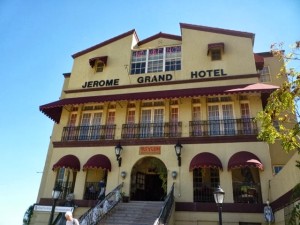
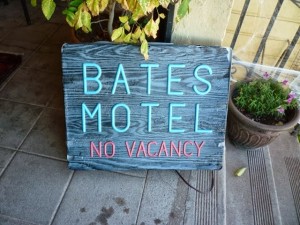
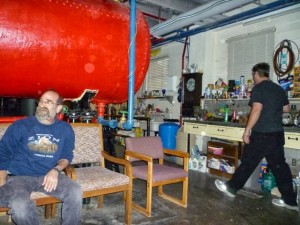
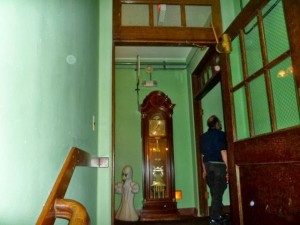
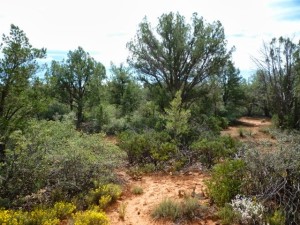
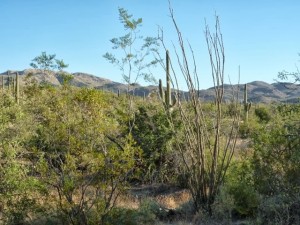
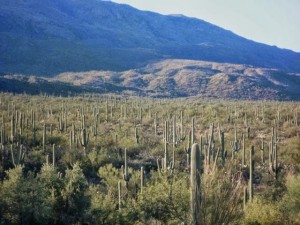
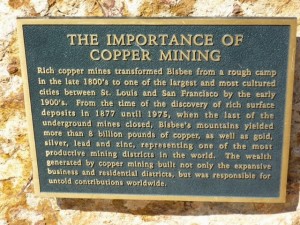
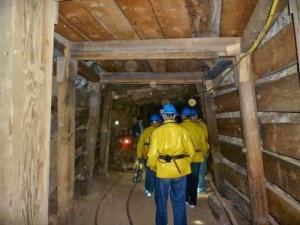
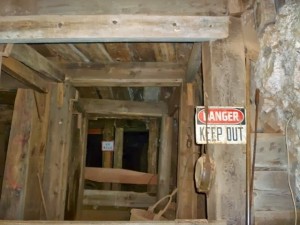

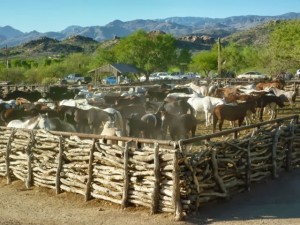
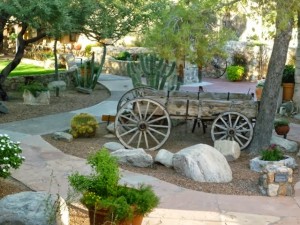
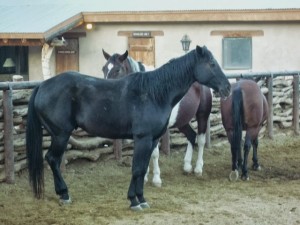
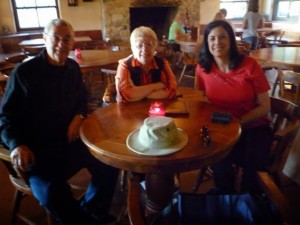
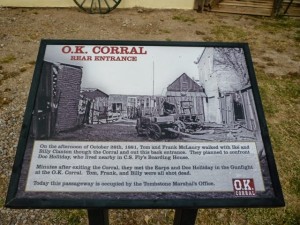
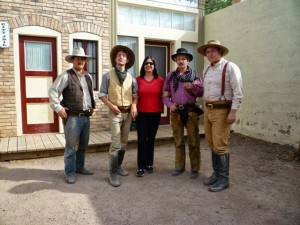
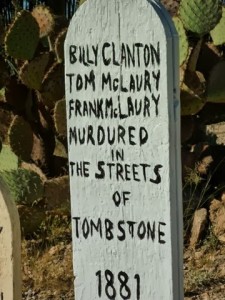
A question, Nancy. It sounds like your story was pretty well developed before you took your research trip. Do you think that’s helpful? It appears that allowed you to do more than just gather atmosphere.
See reply below.
Nothing like good old, first-hand research. I can’t seem to get out of LA in my books (it’s simply the best noir city of all) but I still go on location, take photos, feel the pulse. Every neighborhood is different here. I love it.
Each different section of the city is probably its own microcosm of society. That’s a rich background to draw from in your stories. And yes, you still need the sensory details.
Oh, yes. I had written my synopsis and cast of characters before going on this trip, so I knew exactly what and where I had to research. It wasn’t a random visit by any means. But many of our excursions, not in the synopsis, may make their way into either this story or another Drift Lords novel. The vortexes at Sedona would be perfect for those stories. Watch my personal blog for a day to day account of the places we visited and how they might work into Peril by Ponytail. http://nancyjcohen.wordpress.com
The vortexes gave me a horrendous headache, actually brought me to tears. I can easily see you using them.
Really? I felt nothing. Maybe I was in the wrong area.
NOTE: I am leaving for critique group and will respond to your comments when I return.
I’m writing an urban fantasy series set in Phoenix, so when we moved there, it was perfect. You get a real feel for a place when you live there–how different Scottsdale is from Mesa, or the monsoons in the summer, and the names of the wispy little trees. Are you going to mess with the legend of the Lost Dutchman Mine (I think it’s called)?
I am not familiar with that legend, Kessie. What is it? One place we went that was really helpful is the Desert Botanical Gardens. I took notes and photos on all the labeled cacti and trees.
Oh, it’s a lost gold mine in the Superstition Mountains that people have looked for since the 1800s. Man, you want UFO sightings, just google those mountains. I have yet to see any, much to my disappointment. 🙂
Thanks for sharing those stories and great photos, Nancy. And to answer your question: New Orleans. Need I say more?
New Orleans is wonderfully atmospheric, not to mention the great food! I set my very first (unsold) mystery there and even sat in Paul Prudhomme’s kitchen. It’s a great place to go for firsthand research.
New Orleans is definitely a place you have to “feel.” So many books have been set there. I’d be intimidated to do it right, but it would require shoes on the ground. for sure. I’d love to stay and write a book there.
Stopped off to visit a friend in Nawlins in 1965 and was lucky to escape the place. In some respects it’s one big vortex. Of course it’s wondrous and full of intrigue and interesting people. But there’s another side that’s a whole different ball of wax. I can’t explain the allure and magic and how captivating it is. Maybe Joe can go there.
Fascinating! And your photos really enhance the recounting of your experiences, Nancy. I can see how important it is to experience different geographical and cultural locations firsthand. Thanks for sharing!
I couldn’t write this book without being there. Keep travel journals wherever you go. You never know when you might use the material.
Nancy, what do you think of using accounts of others to get a feel for a place? For example, say you wanted your character to work at the South Pole. It would be extremely expensive to travel there, but there are many accounts of the experience (books, blogs, articles). I would think this would be necessary for historical fiction, but what about contemporary fiction?
Certainly, blogs and journals, maps and photos, etc. would be extremely useful in researching a contemporary story. The hardest thing to pin down are the sensory impressions so you’d need to find those details. Even when I make up planets and worlds for my sci fi elements, these details count.
Fabulous research trip, Nancy–and it sounds like it was a wonderful vacation as well. I could tell from your Facebook updates how much you were enjoying it! I was inspired to write a historical story after visiting a family member’s home in Fort Davis, Texas. Set on top of a mounttain, it had commanding views of the Davis Mountains in West Texas. The house looked directly down on the frontier fort after which the town is named. The fort has been beautifully restored; it was during a tour there that I learned about the story of one officer who served there. I wrote a screenplay about the story, which was optioned by Burt Reynolds (who had his own production company back then). The whole thing was a wonderful experience, and added to my understanding of the real value of on-site research.
Sounds cool, Kathryn. What happened to your film option? You’re right about the history of a place being inspirational. I marvel at the pioneers who ventured west and braved the climate, the Indians, the harsh living conditions. Linda Hubaleck, one of my Booklover’s Bench partners, writes about this: http://bookloversbench.com . We were in a lot of places that dated back to the 1880’s.
It got optioned several times, but never made into a film. It was fun getting a hug from Burt, though! 🙂
Maybe it’s a failure of imagination but I really can’t get a feel for a story until I have been to the place I am going to write about. It is like fuel for the brain, as you note, Nancy. Two places immediately come to mind: Paris, which was the main setting for our thriller “A Killing Song.” I had been there many times before starting this book but a recent trip helped greatly, esp because I was looking for non-tourist locations such as the Arab neighborhood of the 19th arrondisement. Also, I just returned from San Francisco where my WIP is set. It’s another city I have been to often but not within the last decade. It has changed greatly since my last trip. I got great ideas I had never considered to incorporate into the plot.
And when you revisit a city with a book in mind, you see things differently, don’t you? You’re looking at it with the writer’s eye, which picks up details we won’t notice as tourists. It’s great if you can go in person. If so, look for those blogs, diaries, and journals online. Not everyone can afford to travel, unfortunately.
I lived in Alaska for 10 years and had TONS of amazing adventures. I left my heart there and still write about it. I’ve read books set in AK where it was painfully obvious the author did little research.
My hometown of San Antonio is another place that’s been written about, but not everyone gets it right. Nothing replaces hands on research.
That’s so true, Jordan, especially for a place like Alaska.
I have lived in Alaska almost all my life. I still remember when “Northern Exposure” started airing. We all loved to poke fun at all the mistakes. Then the stories drew us in. Many Alaskans that I knew became dedicated fans, despite the inaccuracies. I guess good writing trumps all.
Ha! I loved Northern Exposure. It reminded me of Talkeetna. The native woman character who worked at the Doc’s office was perfect casting.
Local smells (ocean/bay smells in SF), feel of the air, typical sounds of wind and animals (city sounds, even-the squeeky L-train in the Chicago Loop), the light in fall in DC are all essential elements. I’m drawing on experiences in Northern California Sonoma County for a creepy story setting (it’s got a vortex and a time warp) where a horror writer gets his comeuppance for all the misery and grief he’s inflicted up his characters. This will be a writers conference you won’t want to miss.
Sonoma County has a vortex and a time warp? Sounds like my kind of story.
cathouse in the hood. interesting.
I’m pretty well traveled, but it is the little mundane details.
In my 1st page that went up for critique, I thought about the garage under construction at the hospital where I visited someone every day for many months. And that sensation when the elevator opens and it is quiet after weeks of uproar.
The RV park where a chunk of the story happens is patterned after a famous park in Texas. I stayed there on my way to a writers’ conference. The entire town of Cochinelle is a riff on Livingston Texas. And I’ve worked in downtown Dallas and gotten lost in Tyler. I’ve smelled the chemical plants around Beaumont on a hot day.
Okay, I’ve never had a gunfight with African mineral smugglers in the desert outside Austin, but I’ve spent enough time in the boons of Texas that I think I can capture the atmosphere and read enough Gilstrap that I think I can do justice to the gunplay.
The next book in the series either starts or ends in Biloxi in November because one of the best days I have had on this planet was sitting on a deserted Gulf beach in 70 degree weather 2 days after Thanksgiving. And she is going to Mt. Rushmore, because, damn it, I want to go. If I can’t do a real roadtrip, I’ve done it so many times in my head that I can fake it.
And there’s this spooky mystical Catholic church in the Latin Quarter in Paris that I may transplant to New Orleans . . . hmm . . . *scampers off to outline*
Terri
PS: Jim, I totally want to read that . . .
Mystical locations will often prompt inspiration, and what can be creepier than a spooky church? I got that sudden quiet in the garage scene when you wrote your first page submission.